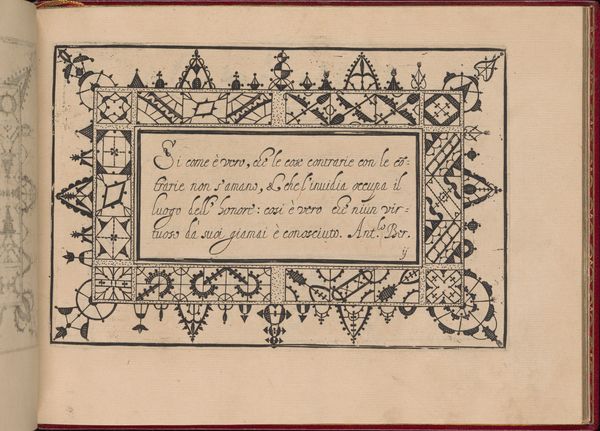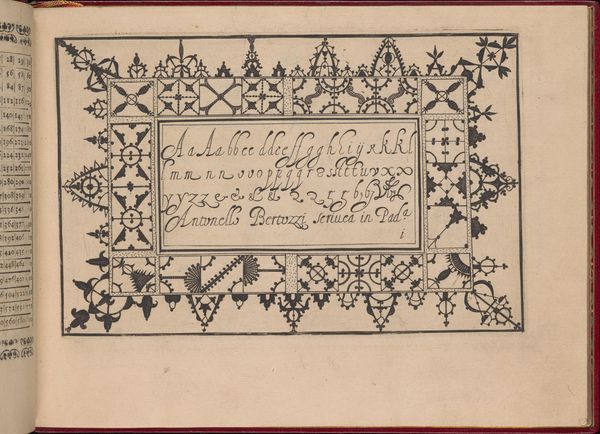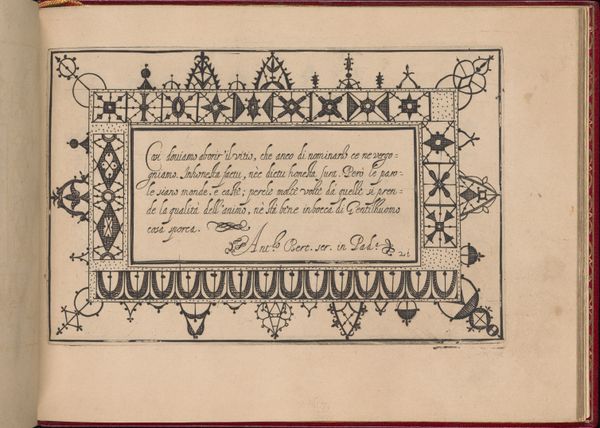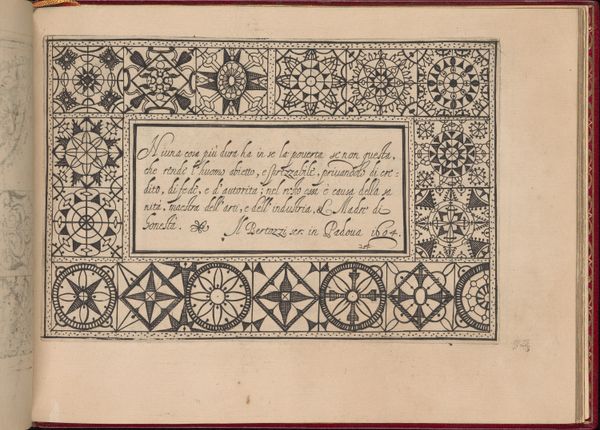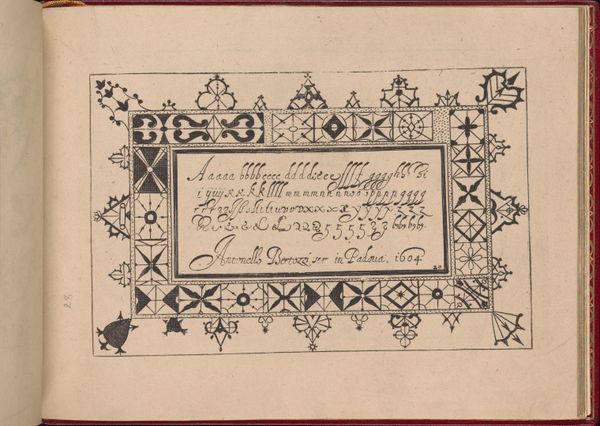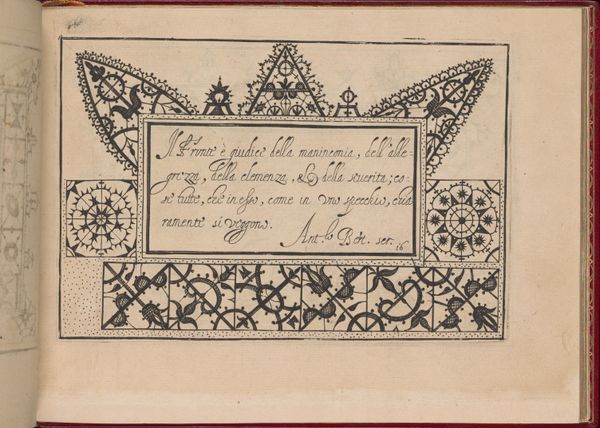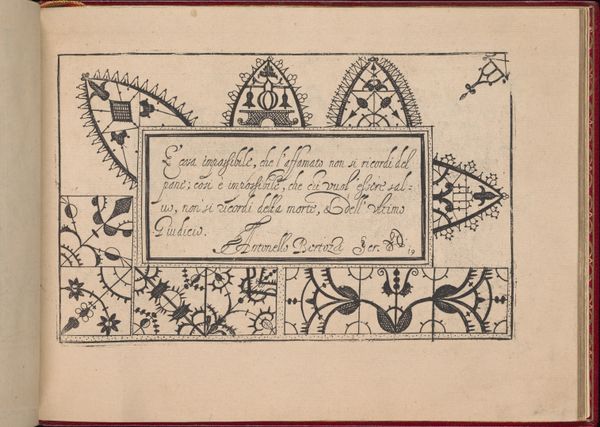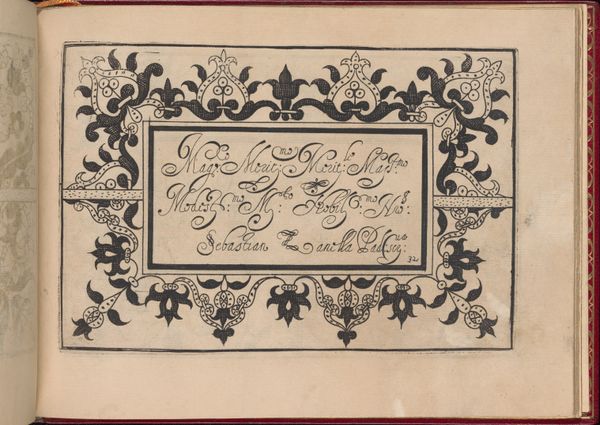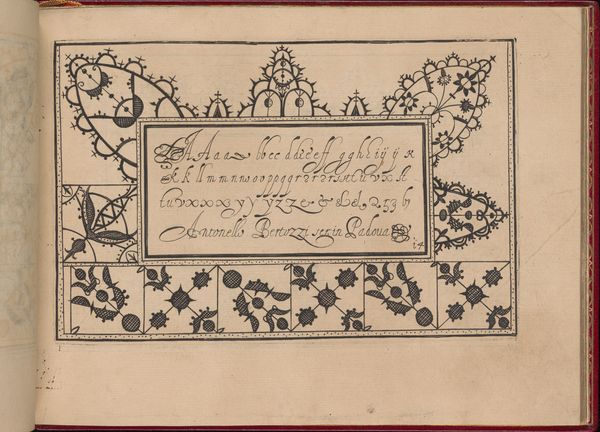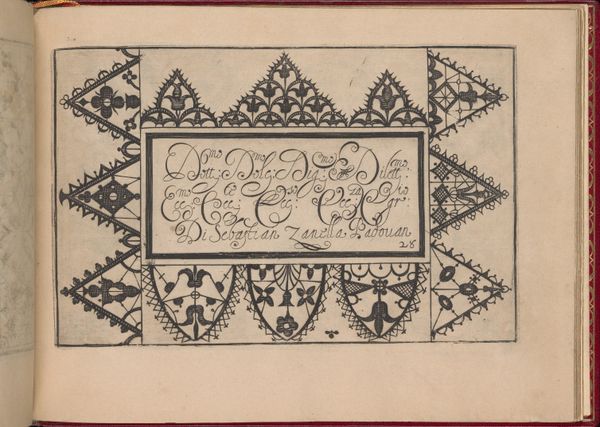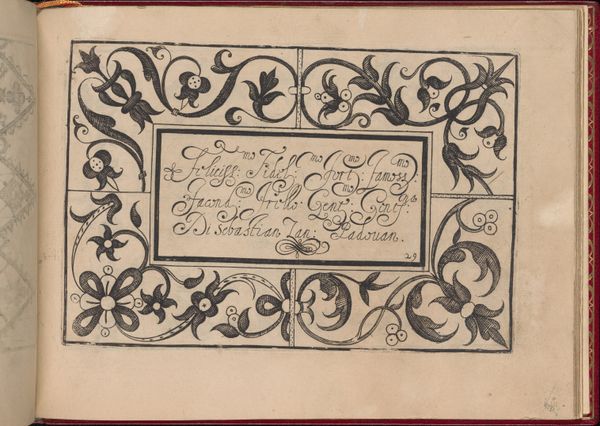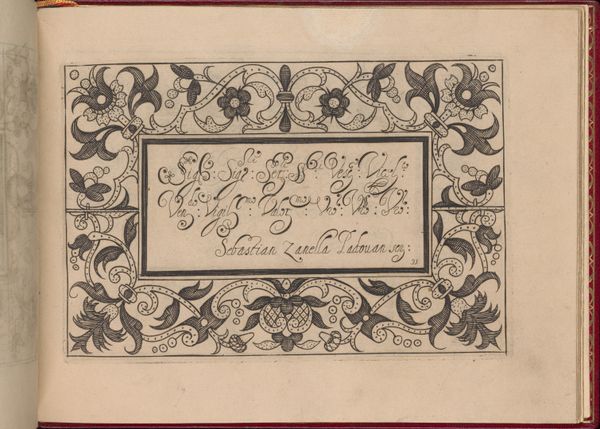
Ghirlanda: Di sei vaghi fiori scielti da piu famosi Giardini d'Italia, page 16 (recto) 1604
0:00
0:00
drawing, graphic-art, print, ink, engraving
#
drawing
#
graphic-art
#
medieval
# print
#
pen sketch
#
book
#
ink
#
geometric
#
line
#
engraving
#
calligraphy
Dimensions: Overall: 5 7/8 x 7 7/8 in. (15 x 20 cm)
Copyright: Public Domain
This is page 16 from “Ghirlanda: Di sei vaghi fiori scielti da piu famosi Giardini d'Italia,” created by Pietro Paulo Tozzi, sometime in the early 17th century. As a book of lace patterns, this work speaks volumes about the social fabric of its time, particularly gender and class. Lace making was a highly skilled and valued craft, predominantly practiced by women, and often passed down through generations. The ability to produce or own fine lace was a marker of status. The patterns themselves, rendered with remarkable precision, embody a tension. They are both aesthetically pleasing and deeply functional, intended as templates for a craft that provided women an avenue for economic independence, while simultaneously reinforcing traditional gender roles. These intricate designs allowed women to express creativity and skill within the confines of their socially prescribed roles. Ultimately, this page prompts us to reflect on the complex interplay between artistic expression, gendered labor, and social status in the early modern period.
Comments
No comments
Be the first to comment and join the conversation on the ultimate creative platform.
